14. Salomè (Carmelo Bene, 1972)

Italian actor and director Carmelo Bene was a major innovator in stage practice; his notions about the surpassing of theatrical tradition were strongly influential on modern theater in Europe, also inspiring the work of philosopher Gilles Deleuze.
From 1968 to 1973, Bene devoted himself to making films; his 1968 feature debut “Nostra Signora dei Turchi” (“Our Lady of the Turks”) brought him into the limelight as a filmmaker. One of his most representative works is his film adaptation of Oscar Wilde’s drama “Salomè”, showing in his words: “The impossibility of martyrdom in a world no longer barbaric, but generally stupid.”
Working with a low budget, Bene shoots his film in a dark studio with neon lights; the costumes are anachronistic, the actors wear heavy makeup and speak from unnatural positions. Bene himself portrays the protagonist of the play, Herod, while the titular character is played by top model Donyale Luna.
The unrealistic scenography is shown by nervous hand-held cameras and rapid, nearly subliminal editing; it is also remarkable how Bene avoids the use of shot-countershot by showing the actors’ reflections into a portable mirror. Dialogue is also disturbed by overlapping, loud sound effects, and estranging musical themes. The result is a cruel and deliberately irritating film full of vibrating moments.
13. Pastoral: To Die in the Country (Den-en ni shisu, Shuji Terayama, 1974)
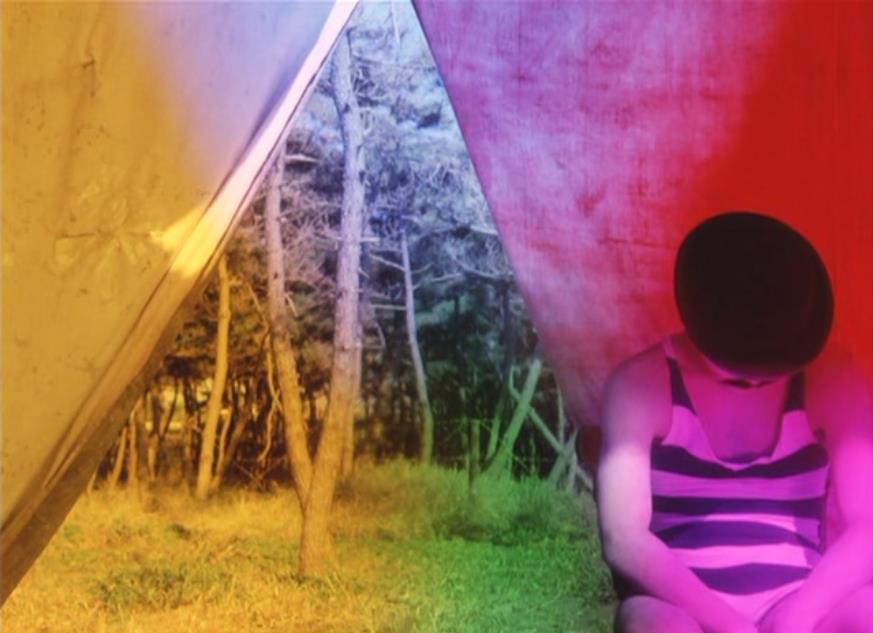
Shuji Terayama’s body of work, which ranges from theater to novel and film, shows the imprint of a talented artist who reflects upon poetry, sexuality, and Japanese history, as is shown in films like “Throw Away Your Books, Rally in the Streets” and “Emperor Tomato Ketchup” (both from 1971). His 1974 film “Pastoral: To Die in the Country” gives an insight into his themes and assets.
Set in the Japanese province after World War II, “Pastoral” depicts the growth of a teenager striving to break free of his oppressive mother, who lives symbiotically with her son after the death of her husband.
After talking with his father’s spirit, the boy meets several people (including a circus company), each providing a different look on sexuality. The tale is later revealed to be a movie a director is working on, in an attempt to make peace with his past. Thus, “Pastoral” develops as a meditation on life, art, and sex, as well as memory and remorse.
The most distinguishing trait of “Pastoral” is its mise-en-scène; the parts set in the past display a richly colorful palette that contrasts with the sepia tone of the modern day footage. Each environment has a different cinematography; the domestic parts with mother and son have the severe look of a prose performance, while the scenes set in the circus feature heavily filtered visuals; the scenes set in a haunted mountain, instead, show the vivid use of contrasting tones of blue and red.
Actors wear heavy makeup and even masks, and their gestures clearly derive from the school of Noh; dialogues alternate with songs and choreographies influenced by Butoh. A celebration of arts in all its forms, “Pastoral” manages to play with cinema, theater and the viewer’s mind.
12. Querelle (Rainer Werner Fassbinder, 1982)
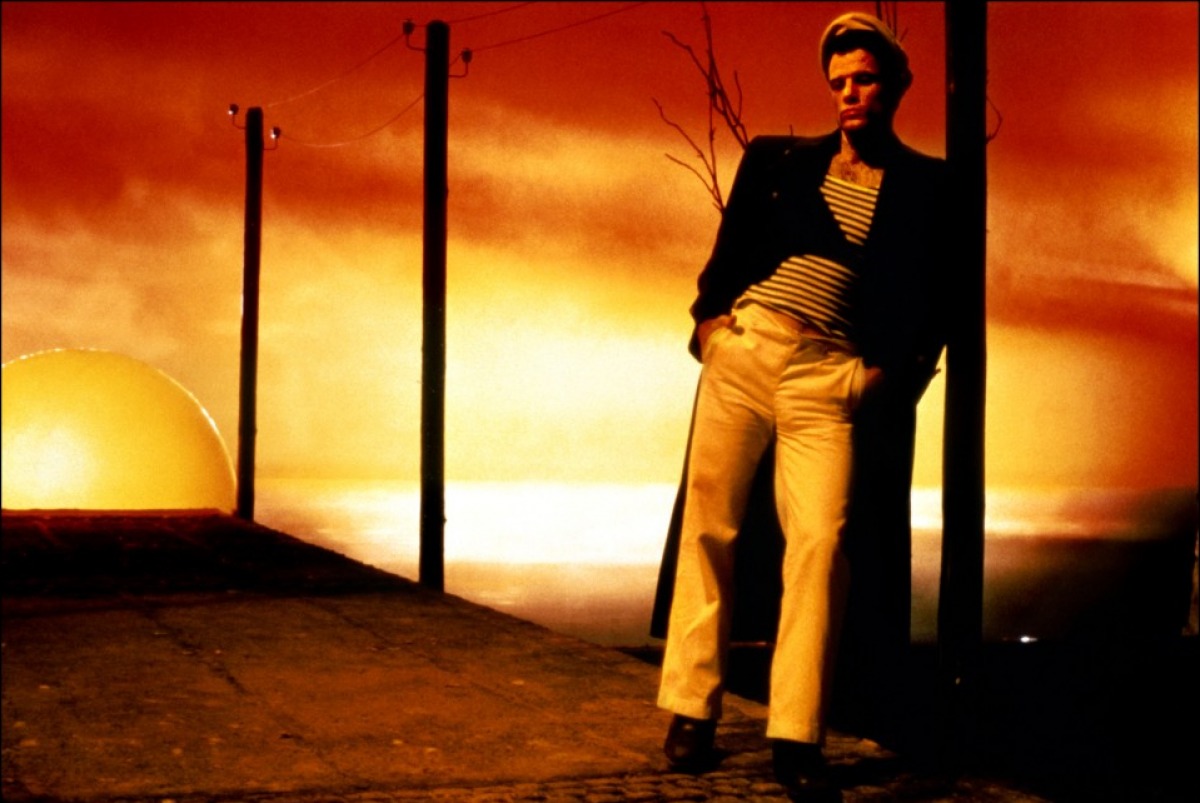
The last feature film by German director Rainer Werner Fassbinder was released posthumously in 1982, two months after the prolific filmmaker had died of an overdose. Based on Jean Genet’s novel “Querelle de Brest”, the film tells the story of the sailor Querelle, who lands at Brest and starts having homosexual intercourse with the port’s population; to the harbor people, Querelle becomes an obsession, like a solar deity of love whose passive omnipotence marks the characters’ fate.
The port of Brest is entirely reconstructed in a studio, with artificial lighting and ostensibly fake sceneries. The fictitious nature of the setting is denounced also by the curious treatment of forced perspective, with the red sun of Brest crossing over the horizon.
The costumes are conventional and anachronistic, according to a kind of imagery deriving both from French poetic realism and queer aesthetic. Through his attitude for hybridation, Fassbinder sublimates mélo in a dreamlike mood, giving the audience his poetic and artistic testament.
11. Talk Radio (Oliver Stone, 1988)
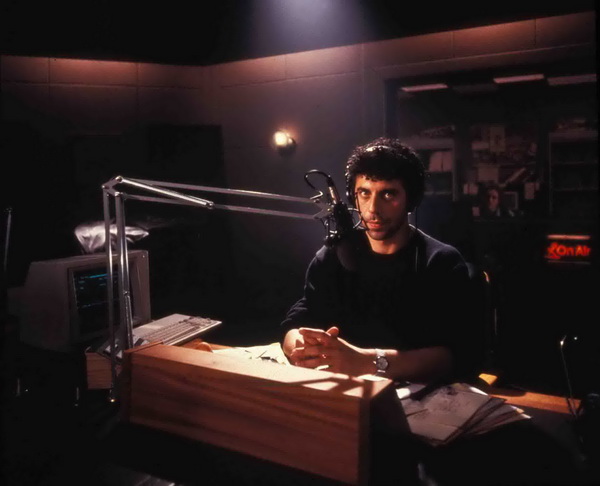
Oliver Stone is a rather controversial artist; while his storytelling skills are unquestioned, his directing style is often regarded as manipulative and rhetorical. Renowned for classics such as “Platoon” (1986) and “JFK” (1991), Stone is also known for critical and box office bombs like the infamous “Alexander” (2004). At any rate, “Talk Radio” is one of his biggest accomplishments, a lucid and unforgiving look at the dark side of America.
Starring Eric Bogosian and adapted from his own play, the film tells the story of Jewish radio speaker Barry Champlain, whose successful show “Voices in the Night” hosts the most deranged subjects in Dallas, Texas. A neo-Nazi group starts to threaten the host, while a corporation tries to influence the show’s direction.
Stone is able to keep the viewer’s attention by exalting the claustrophobic setting of the radio station where most of the film is set. Superbly photographed by Robert Richardson, the movie is a breathtaking run to the heart of a country that’s “bad to the bone.” Bogosian rules the scene with a magnetic performance, assisted by a close-knit group of supporting actors which include John C. McGinley, Ellen Greene, and scene stealer Michael Wincott.
Stone is great at keeping focus on the events and, like a music conductor, he knows how to build dramatic allegros and crescendos, finding the right move at the right moment; depth-of-field, long takes, and fast-paced montages concur to make the film both theatrical and realistic.
The peak of Stone’s ability is shown in the finale, with a 360-degree long take embracing the entire tragedy of the anti-hero. Even this one scene would be enough to show how a good play can become great and thrilling cinema when handled by a director with a rigorous vision.
10. Prospero’s Books (Peter Greenaway, 1992)

Anyone who has watched a film by Peter Greenaway knows what themes and tropes obsess the British director – an encyclopedic approach to all branches of culture, a love for art and antiquities, and the ideal of cinema as an hypertext. These are the elements shown in films like “The Pillow Book” (1996) and the “Tulse Luper Suitcases” trilogy (2003-2004).
Adapted from William Shakespeare’s “The Tempest”, the story of the Duke of Milan becomes in Greenaway’s hands a journey through civilization, as resumed in Prospero’s huge library. The distinction in acts and scenes is dismissed and every sequence is put in relation to any kind of book.
All of the events are seen from the perspective of Prospero (John Gielgud), as the mastermind of everything happening on the island; aware of every scheme, he mimics the characters by pronouncing their lines. The protagonist’s narration is close to Brechtian techniques of estrangement, and every scene outside the cave consists of a mimic performance which also includes contemporary dance (performed by dancer and choreographer Michael Clark as Caliban).
One more aspect crafted by Greenaway to give shape to his world is the scenography; the settings are inspired from Baroque scenery with forced perspectives, trompe-l’oeil, and backcloths. The coexistence of different settings in the same shot is accomplished by means of superimpositions, rear projections, and mattes (one of Greenaway’s trademarks). The result is pure visual magic, a dreamlike quality that elevates “Prospero’s Books “above many other Shakespearean films.
9. Dogville (Lars von Trier, 2002)
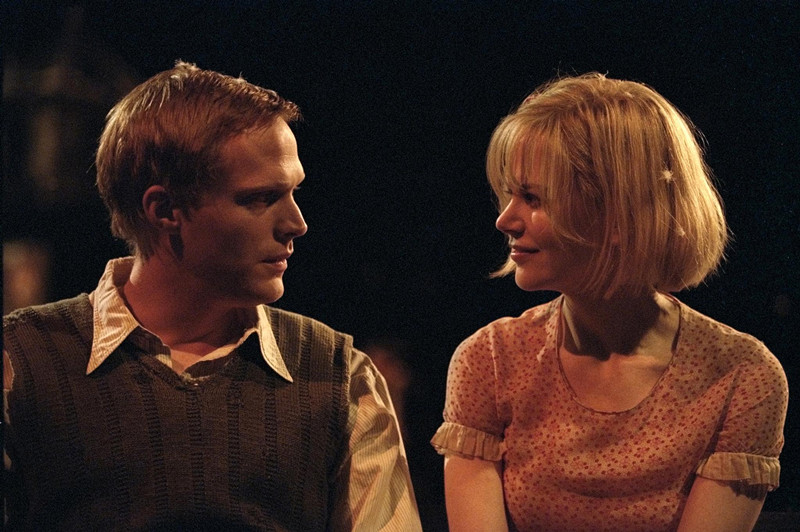
“Dogville” is not a flawless film. For anyone accustomed to Lars von Trier’s works, his nihilistic views about humanity will be nothing new, and the plot’s construction may appear somewhat mechanic; however, the eighth feature film by the Danish director still sets a great achievement for cinematic art dealing with theater.
The story of Grace, a woman chased by gangsters who ends up in the small town of Dogville during the Great Depression, is reminiscent of at least two genres – the American crime movie and the European Bergfilm. The core of the film’s structure, nonetheless, derives from avant-garde theater, which makes “Dogville” one the best examples of Brechtian direction in filmmaking.
The town of Dogville is recreated on a stage surrounded by darkness, on which only the essential objects are featured; doors and walls are invisible, as well as vegetation and animals, and acts like opening doors and hoeing the ground are expressed by the actors’ gestures and sound effects. Daylight and darkness are conventionally shown with studio lighting, while many locations are only suggested by practical set pieces.
The major link with Brecht’s theater is a narrative approach which, close to the notion of “epic theater”, introduces an off-screen narrator (John Hurt) to resume, clarify, and comment on the events – sometimes ironically. The story is subdivided into eight chapters, each featuring an allusive tagline like “Mother Courage”. All of the characteristics of “Dogville” point to a certain degree of estrangement, by which the story becomes exemplary and its interpretation is delegated to the viewer.
8. Dracula: Pages from a Virgin’s Diary (Guy Maddin, 2002)
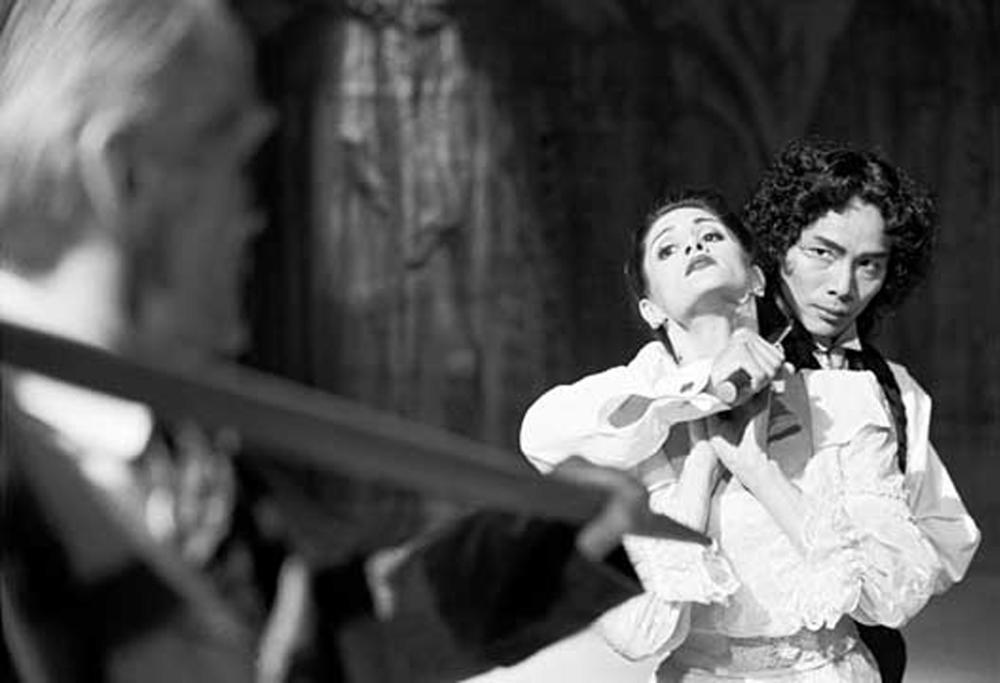
Canadian director Guy Maddin has always been obsessed with the origins of cinema; since his first feature film, “Tales from the Gimli Hospital” (1988), his work constantly revolves around the recovery of silent and early sound films, meanwhile reflecting upon the dynamics of sex and the unconscious. “Dracula: Pages from a Virgin’s Diary” comes after Maddin had consolidated his fame with films like “Archangel” (1992) and “The Saddest Music in the World” (2000).
Rather than simply adapting Bram Stoker’s novel for the screen, Maddin pays his tribute both to Universal’s classic “Dracula” and early experimental film. The film documents a performance by the Royal Winnipeg Ballet, so that Stoker’s tale is given as a long and articulated choreography that is devoid of dialogue and narration.
Furthermore, the movie is silent and shot in granulous black and white, with undertitles supplying to spoken word and color filters applied to different scenes – a typical trait of films in the silent era. Maddin captures the dancers’ moves with an hand-held camera (almost a dancer among dancers), then makes jump-cuts and splits them in a myriad of brief shots.
Stoker’s text, however, is not a mere pretext for an exercise in style; Maddin has a clear vision of the vampire as a symbol of diversity and sexual pulsions. Therefore, he gives the titular role to Asian dancer Zhang Wei-Qiang, who is perfect at enhancing the conturbate charm of the Count playing his ballet with the souls of the women.